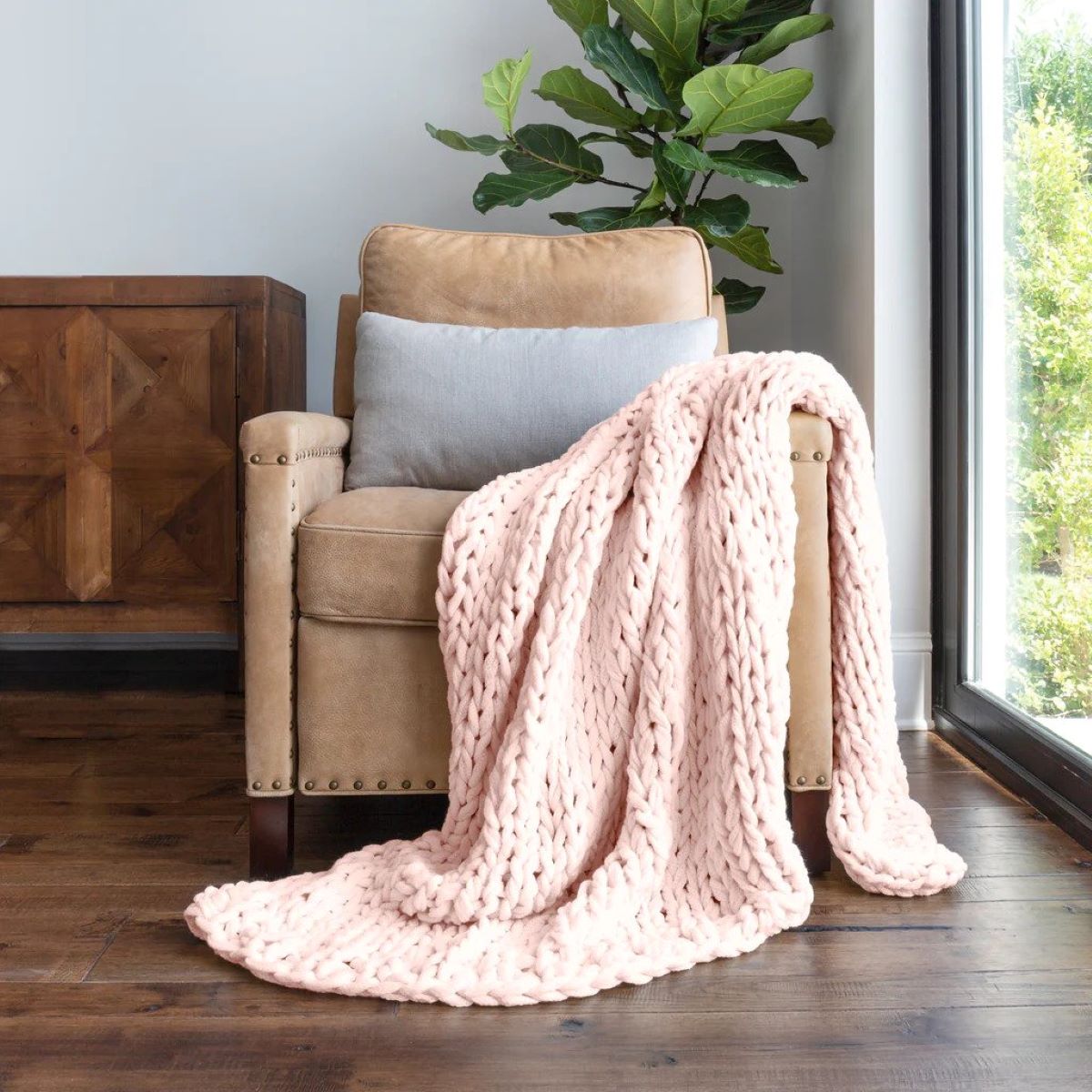

Articles
How To Store Throw Blankets
Modified: October 20, 2024
Learn the best ways to store your throw blankets and keep them organized with these helpful articles.
(Many of the links in this article redirect to a specific reviewed product. Your purchase of these products through affiliate links helps to generate commission for Storables.com, at no extra cost. Learn more)
Introduction
Throw blankets are a cozy and versatile addition to any home. They provide warmth and comfort, and can also serve as a stylish decorative accent. Whether you have a collection of throw blankets or just a few favorites, it’s important to store them properly to keep them in optimal condition.
In this article, we will explore the reasons why it is crucial to store throw blankets properly, as well as different storage methods to choose from. We will discuss the advantages of folding vs. rolling, storing throw blankets in closets or cabinets, utilizing storage baskets or bins, hanging throw blankets on hooks or ladders, and even vacuum-sealing throw blankets for long-term storage. Additionally, we will provide helpful tips on how to protect your throw blankets while they are in storage.
By implementing the right storage techniques, you can ensure that your throw blankets remain clean, fresh, and ready to use whenever you need them. So, let’s dive in and discover how to store throw blankets effectively!
Key Takeaways:
- Properly storing throw blankets is crucial for preserving their quality, protecting them from damage, and ensuring their longevity. Choose the right storage method based on your space and preferences to keep your blankets organized and easily accessible.
- Implementing protection tips such as cleaning before storage, avoiding plastic bags, and preventing moth damage helps safeguard throw blankets from pests, stains, fading, and other potential damage while in storage. Follow these measures to maintain your blankets in excellent condition for future use.
Read more: How To Throw A Throw Blanket
Why Store Throw Blankets Properly
Properly storing throw blankets is essential to protect them from damage and maintain their quality over time. Here are a few reasons why it’s important to store your throw blankets correctly:
- Prolongs lifespan: When throw blankets are left exposed to dust, sunlight, or moisture, they can become faded, discolored, or develop unpleasant odors. By storing them properly, you can extend their lifespan and keep them looking and smelling fresh for longer.
- Prevents damage: Throw blankets are often made from delicate materials like wool, cashmere, or blends of natural fibers. Improper storage can lead to snags, tears, or pilling, which can significantly reduce their aesthetic and functional value. By protecting them in storage, you can prevent this type of damage.
- Saves space: Storing throw blankets properly helps to maximize your storage space. Whether you have limited closet space or want to declutter your living areas, efficient storage methods can help you make the most of the available room.
- Easy access: When throw blankets are stored in an organized manner, it becomes much easier to find and retrieve a specific blanket when needed. No more rummaging through a tangled mess of blankets – you can simply grab the one you want without any hassle.
- Preserves aesthetics: Throw blankets often feature beautiful patterns, colors, and textures that enhance the visual appeal of your living spaces. Proper storage ensures that these aesthetic qualities remain intact and ready to be displayed whenever desired.
By recognizing the importance of proper storage, you can protect your throw blankets from damage, preserve their aesthetic appeal, and ensure their longevity. In the next section, we’ll explore various storage methods to help you choose the one that best suits your needs.
Choosing the Right Storage Method
When it comes to storing throw blankets, there are several storage methods to consider. The best choice will depend on factors such as available space, the number of blankets you have, and personal preference. Here are some popular storage methods to help you make the right decision:
- Folding vs. Rolling: Both folding and rolling are common methods for storing throw blankets. Folding involves neatly folding the blanket into a square or rectangle shape, while rolling entails rolling it up like a burrito. Folding is ideal for blankets that are not prone to wrinkling, while rolling is a great option for blankets made of bulky materials or those that tend to wrinkle easily.
- Closets or Cabinets: Storing throw blankets in closets or cabinets is a convenient and space-saving option. You can use shelf dividers or storage bins to keep the blankets organized and prevent them from getting tangled. This method is especially useful if you have a dedicated space for storing linens.
- Storage Baskets or Bins: Utilizing storage baskets or bins is a versatile option that allows you to easily access and transport your throw blankets. Choose baskets or bins that are the appropriate size for your blankets and place them in a designated storage area, such as under the bed or in a designated storage closet.
- Hooks or Ladders: If you prefer a decorative storage solution, consider hanging your throw blankets on hooks or a decorative ladder. This not only keeps them neatly displayed but also adds a touch of visual interest to your space. Hooks or ladders can be mounted on walls or placed in a corner of the room for easy access.
- Vacuum-Sealing: For long-term storage or if you have limited space, vacuum-sealing your throw blankets can be a practical option. Vacuum-sealed bags remove excess air and create a more compact storage solution. However, be sure to use this method only for blankets that can withstand compression.
Consider your specific needs and space limitations when choosing the right storage method for your throw blankets. It’s also helpful to assess the climate conditions in your storage area to ensure that your blankets are protected from dust, moisture, and excessive heat or cold.
Now that you have an understanding of different storage methods, it’s time to explore each option in more detail. In the following sections, we will delve deeper into folding vs. rolling, storing throw blankets in closets or cabinets, utilizing storage baskets or bins, hanging throw blankets on hooks or ladders, and vacuum-sealing throw blankets. By the end, you’ll be equipped with the knowledge to store your throw blankets in the most suitable manner.
Folding vs. Rolling
When it comes to storing throw blankets, one decision you’ll have to make is whether to fold or roll them. Both methods have their advantages, and choosing the right one will depend on the type of blankets you have and your personal preferences.
Folding: Folding is a classic method for organizing and storing throw blankets. It involves neatly folding the blanket into a square or rectangular shape. Folding is a great option for blankets made of lightweight or non-wrinkle-prone materials. It keeps the blankets compact and easy to stack or store in cabinets or on shelves. Plus, when you fold a blanket, you can easily see and access the different patterns or colors it has.
Rolling: Rolling is another popular method for storing throw blankets, especially ones made of bulky materials or those that tend to wrinkle easily. Rolling involves tightly rolling the blanket up, similar to how you would roll a burrito. This method saves space and helps to preserve the shape and integrity of the blanket. Additionally, rolling can prevent wrinkles and creases in the fabric, making it a great choice for blankets made of delicate materials like cashmere or silk.
Whether you choose to fold or roll your throw blankets, it’s important to do it with care to avoid unnecessary wrinkles, creases, or damage. Here are some tips for each method:
Tips for Folding:
- Start by shaking the blanket gently to remove any loose debris or dust.
- Lay the blanket flat on a clean surface, ensuring it is spread out evenly.
- Fold one side of the blanket towards the center, then fold the other side to overlap it. Aim for even and straight folds.
- Continue folding the blanket in this manner until you reach the desired size for storage.
- Place the folded blanket in a storage container, such as a bin or shelf, ensuring it is not compressed or squeezed too tightly.
Tips for Rolling:
- Gently shake the blanket to remove any loose debris or dust.
- Lay the blanket flat on a clean surface and smooth out any wrinkles or creases.
- Start rolling from one end of the blanket, keeping it as tight as possible without putting excessive pressure on the fabric.
- Continue rolling until you reach the opposite end of the blanket, making sure to keep the roll neat and even.
- Secure the rolled blanket with a ribbon, twine, or a fabric strap to keep it tightly rolled.
- Store the rolled blanket in a storage basket, bin, or on a shelf, making sure it is placed in an upright position to maintain its shape.
Ultimately, whether you choose to fold or roll your throw blankets, the goal is to minimize wrinkles, keep the blankets tidy, and protect them from dust and potential damage. Consider the size, material, and space available when deciding which storage method works best for you.
In the next section, we will explore the option of storing throw blankets in closets or cabinets, which is a convenient and space-saving method.
Storing Throw Blankets in Closets or Cabinets
If you have a closet or cabinet with available space, storing throw blankets in this manner can be a convenient and organized solution. It helps to keep your blankets easily accessible while maximizing your storage area. Here are some tips for storing throw blankets in closets or cabinets:
- Clean before storing: Before storing your throw blankets, make sure they are clean. Give them a gentle shake to remove any loose debris or dust. If necessary, follow the manufacturer’s instructions for washing or dry cleaning.
- Fold or roll: Depending on your preference and the thickness of the blankets, you can either fold them or roll them. Use the folding or rolling techniques we discussed earlier to neatly arrange your blankets.
- Organize with shelf dividers: If you have multiple blankets that you want to keep separate, consider using shelf dividers in your closet or cabinet. This will help you create separate sections for each blanket and prevent them from getting tangled or mixed up.
- Use storage bins or baskets: If your closet or cabinet shelves are open, consider using storage bins or baskets to keep your throw blankets neatly contained. This also provides an added layer of protection from dust and potential damage. Opt for baskets or bins that are the appropriate size for your blankets and stack them on the shelves.
- Categorize by season or use: To make it even easier to find the throw blankets you need, consider categorizing them by season or use. For example, you can have a section for lightweight spring/summer blankets and another section for thicker fall/winter blankets. This way, you can easily grab the right blanket for the current season or occasion.
- Label or use clear bins: If you have multiple storage bins or baskets, it can be helpful to label them or use clear ones. This allows you to quickly identify which bin contains the specific blanket you’re looking for, saving you time and effort.
- Keep in a cool and dry environment: It’s important to store your throw blankets in a cool and dry environment to prevent damage from moisture or humidity. Avoid storing them in areas prone to dampness, such as basements or attics.
Storing throw blankets in closets or cabinets not only keeps them neatly organized but also protects them from dust, sunlight, and potential damage. By following these tips, you can create a dedicated storage space for your throw blankets that is both practical and aesthetically pleasing.
In the next section, we will explore another storage option – utilizing storage baskets or bins – which is a versatile and portable solution for storing throw blankets.
To store throw blankets, fold them neatly and place them in a breathable storage bag or container to prevent dust and moisture buildup. Store in a cool, dry place to maintain their quality.
Read more: What Is A Throw Blanket
Utilizing Storage Baskets or Bins
Storage baskets or bins are a versatile and portable solution for storing throw blankets. They offer flexibility in terms of placement and can easily be moved around as needed. Here are some tips for utilizing storage baskets or bins to store your throw blankets:
- Choose the right size: Select storage baskets or bins that are the appropriate size for your throw blankets. They should be spacious enough to accommodate your blankets without squishing or damaging them.
- Consider material and design: Storage baskets or bins come in various materials and designs, so choose ones that suit your personal taste and home decor. Options such as wicker, fabric, or plastic are commonly available and offer different levels of durability and aesthetics.
- Label or color-code: If you have multiple storage baskets or bins, you can utilize labels or color-coding to categorize your throw blankets. This makes it easier to locate specific blankets when needed.
- Stack or nest: If you have limited space, consider stacking your storage baskets or nesting smaller ones inside larger ones. This helps to maximize your storage area and keeps your throw blankets neatly organized.
- Place them under the bed: Utilizing the space under your bed is a practical solution, especially if you have limited closet or cabinet space. Invest in low-profile storage bins that can easily slide in and out from under the bed.
- Utilize vertical space: Take advantage of vertical space by using tall storage bins or stacking multiple bins on top of each other. This allows you to store more throw blankets while still keeping everything organized and easily accessible.
- Keep in a temperature-controlled environment: To ensure the longevity of your throw blankets, store the baskets or bins in a temperature-controlled environment. Avoid areas that are subject to extreme heat, cold, or humidity.
Utilizing storage baskets or bins offers a practical and stylish solution for storing throw blankets. They can be placed in closets, under beds, on shelves, or even in living areas as decorative storage elements. By following these tips, you can keep your throw blankets neatly contained while adding a touch of organization and style to your space.
In the next section, we will explore another creative storage option – hanging throw blankets on hooks or ladders – which can serve as functional decor.
Hanging Throw Blankets on Hooks or Ladders
If you’re looking for a creative storage solution that adds a decorative element to your space, consider hanging your throw blankets on hooks or a decorative ladder. This method allows you to display your blankets while keeping them easily accessible. Here’s how you can effectively hang your throw blankets:
- Select the right hooks or ladder: Choose hooks or a ladder that complement your style and fit well in the room. Opt for hooks that are sturdy and can securely hold the weight of your blankets. For ladders, consider ones with rungs or steps that are wide enough to accommodate the width of your blankets.
- Determine the placement: Decide on the location where you want to hang your throw blankets. It could be on a wall, behind a door, or in a corner of the room. Ensure that the chosen spot is easily accessible and doesn’t obstruct any pathways.
- Fold or roll your blankets: Before hanging, fold or roll your throw blankets using the folding or rolling techniques we discussed earlier. This ensures that they look neat and presentable when displayed.
- Hang on hooks: If you’re using hooks, simply drape the folded or rolled blankets over them. Arrange them in a visually appealing way, alternating colors or patterns if desired. This method allows you to easily swap out blankets or add new ones as your collection grows.
- Hang on a ladder: If you’re using a ladder, drape your throw blankets over the rungs or steps. You can arrange them neatly or create a more relaxed, bohemian look by letting them cascade naturally. Make sure the ladder is secured against the wall or positioned in a stable manner to prevent any accidents.
- Consider additional hooks or knobs: If you have a larger collection of throw blankets, you might need more space to hang them. In that case, consider adding additional hooks or knobs to the wall to create more hanging options.
- Rotate and refresh: To prevent prolonged exposure to sunlight or dust, periodically swap out the throw blankets on display. Rotate them or wash them before putting them back on the hooks or ladder, ensuring that they always look fresh and clean.
By hanging your throw blankets on hooks or a ladder, you not only keep them organized and accessible, but you also add a decorative element to your space. It’s a unique way to showcase your blankets while infusing your room with warmth and texture.
In the next section, we will explore an option for long-term storage or when space is limited – vacuum-sealing throw blankets.
Vacuum-Sealing Throw Blankets
If you have limited storage space or need to store your throw blankets for an extended period, vacuum-sealing them can be a practical solution. Vacuum-sealing removes excess air from the storage bags, reducing the overall size and protecting your blankets from dust, moisture, and pests. Here is how you can vacuum-seal your throw blankets:
- Prepare your blankets: Ensure that your throw blankets are clean and completely dry before vacuum-sealing them. Shake them gently to remove any loose debris or dust.
- Fold or roll your blankets: Depending on your preference and the size of the storage bags, fold or roll your throw blankets using the folding or rolling techniques mentioned earlier.
- Choose the right storage bags: Select vacuum-seal storage bags that are large enough to accommodate your folded or rolled throw blankets. Make sure the bags are made of durable material to ensure the long-term protection of your blankets.
- Place the blankets in the bags: Carefully place your folded or rolled throw blankets into the storage bags, ensuring that they fit snugly but are not overly compressed. Be cautious not to overfill the bags, as this can damage the vacuum seal.
- Use a vacuum cleaner: Attach the vacuum cleaner nozzle to the designated valve on the storage bag. Turn on the vacuum cleaner and let it extract the air from the bag. As the air is removed, you will notice the bag shrinking and conforming to the shape of the blankets.
- Seal the bag: Once the excess air is removed, quickly remove the vacuum cleaner nozzle and immediately seal the storage bag using the provided closure method, such as a zip lock or heat-seal options.
- Store in a cool, dry place: Ensure that the vacuum-sealed bags are stored in a cool, dry location, away from direct sunlight and extreme temperature fluctuations. This will help protect the blankets from potential damage and preserve their quality.
- Monitor periodically: Check on the vacuum-sealed bags periodically to ensure that the seals remain intact. If you notice any damage or air leakage, consider re-vacuum-sealing the blankets in new storage bags.
Vacuum-sealing your throw blankets is an effective way to save space and provide long-term protection. However, keep in mind that vacuum-sealing may not be suitable for all types of blankets, especially those made of delicate or natural fibers. Make sure to assess the compatibility of your blankets with vacuum-sealing before proceeding.
Now that you know how to vacuum-seal your throw blankets, you can confidently store them for future use without worrying about damage or space constraints.
In the next section, we will provide additional tips for protecting your throw blankets while they are in storage.
Tips for Protecting Throw Blankets in Storage
When it comes to storing throw blankets, proper protection is key to ensuring their longevity and keeping them in optimal condition. Here are some valuable tips to protect your throw blankets while they are in storage:
- Clean before storing: Always clean your throw blankets before storing them to remove any dirt, stains, or odors. Follow the manufacturer’s instructions for cleaning or, if necessary, take them to a professional cleaner.
- Avoid plastic bags: Refrain from storing throw blankets in plastic bags, as they can trap moisture and cause mildew or odor issues. Instead, opt for breathable storage bags or natural fabric covers that allow air circulation.
- Use acid-free tissue paper: If you’re concerned about wrinkles or creases, you can wrap your fold blankets in acid-free tissue paper. This will help prevent direct contact and minimize any potential damage to the fabric.
- Avoid moth damage: To protect your throw blankets from moths and other pests, consider placing cedar balls, lavender sachets, or moth repellents in the storage area. These natural deterrents help to keep bugs at bay without causing any harm to the blankets.
- Check for pests and stains: Before storing your throw blankets, inspect them for any signs of pests or stains. If you notice any issues, take appropriate steps to address them before placing the blankets in storage to prevent further damage or infestation.
- Avoid direct sunlight: Prolonged exposure to direct sunlight can cause fading or discoloration of your throw blankets. Store them in a dark or low-light area to protect them from harmful UV rays.
- Avoid extreme temperature fluctuations: Fluctuations in temperature and humidity can damage the fibers of your throw blankets. Aim to store them in an area with a stable climate, away from extreme heat or cold.
- Rotate blankets: If you have multiple throw blankets, rotate them periodically to ensure equal exposure to air and minimize the risk of developing permanent creases or folds.
- Avoid storing heavy items on top: When stacking storage containers or organizing your throw blankets, avoid placing heavy objects on top of them. This can cause unnecessary pressure and deformation on the blankets.
- Regularly air out: Every few months, remove your throw blankets from storage and give them some fresh air. This helps prevent musty odors and keeps them feeling and smelling fresh.
By following these tips, you can protect your throw blankets from pests, stains, fading, and other potential damage while they are in storage. Implementing these measures ensures that your blankets remain in excellent condition and ready for use whenever you need them.
Now that we’ve covered various storage methods and protection tips, let’s conclude our discussion on how to store throw blankets effectively.
Read more: How To Choose The Perfect Throw Blanket
Conclusion
Properly storing throw blankets is essential to preserve their quality, protect them from damage, and ensure their longevity. By following the right storage methods, you can keep your throw blankets organized, easily accessible, and in excellent condition. Throughout this article, we explored several storage options, including folding vs. rolling, storing in closets or cabinets, utilizing storage baskets or bins, hanging on hooks or ladders, and vacuum-sealing for long-term storage.
Whether you choose to fold or roll your throw blankets, store them in closets or cabinets, utilize storage baskets or bins, hang them on hooks or ladders, or vacuum-seal them, each method offers unique advantages and caters to different storage needs. Consider your available space, the number of blankets you have, and personal preference when making your storage decision.
Additionally, we discussed important tips for protecting your throw blankets in storage, such as cleaning them before storage, avoiding plastic bags, using acid-free tissue paper, preventing moth damage, and avoiding direct sunlight and extreme temperature fluctuations.
By implementing these storage methods and protection tips, you can keep your throw blankets in optimal condition, ready to provide warmth, comfort, and style whenever you need them. Remember to periodically check on your stored blankets, rotate them, and air them out to maintain their freshness.
So gather your collection of throw blankets and start organizing them using these strategies. Enjoy the cozy comfort they bring and the decorative touch they add to your living spaces.
Happy storing!
Frequently Asked Questions about How To Store Throw Blankets
Was this page helpful?
At Storables.com, we guarantee accurate and reliable information. Our content, validated by Expert Board Contributors, is crafted following stringent Editorial Policies. We're committed to providing you with well-researched, expert-backed insights for all your informational needs.


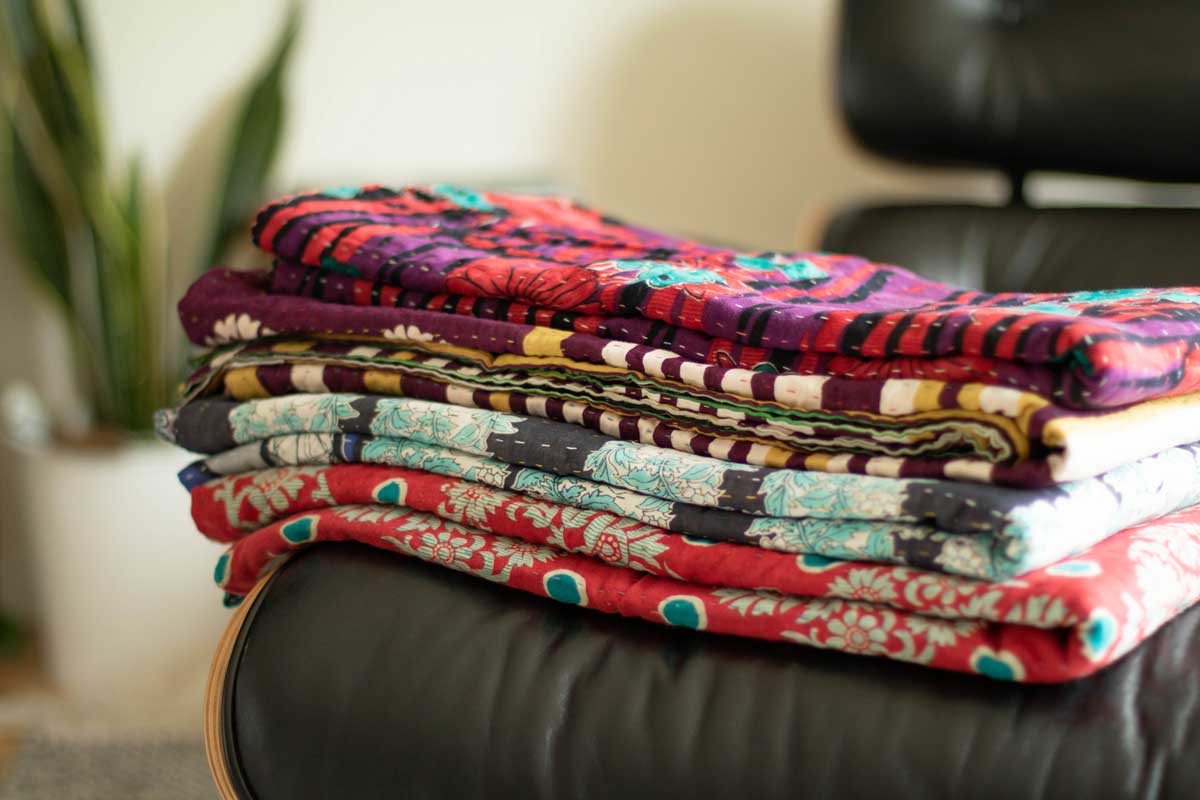


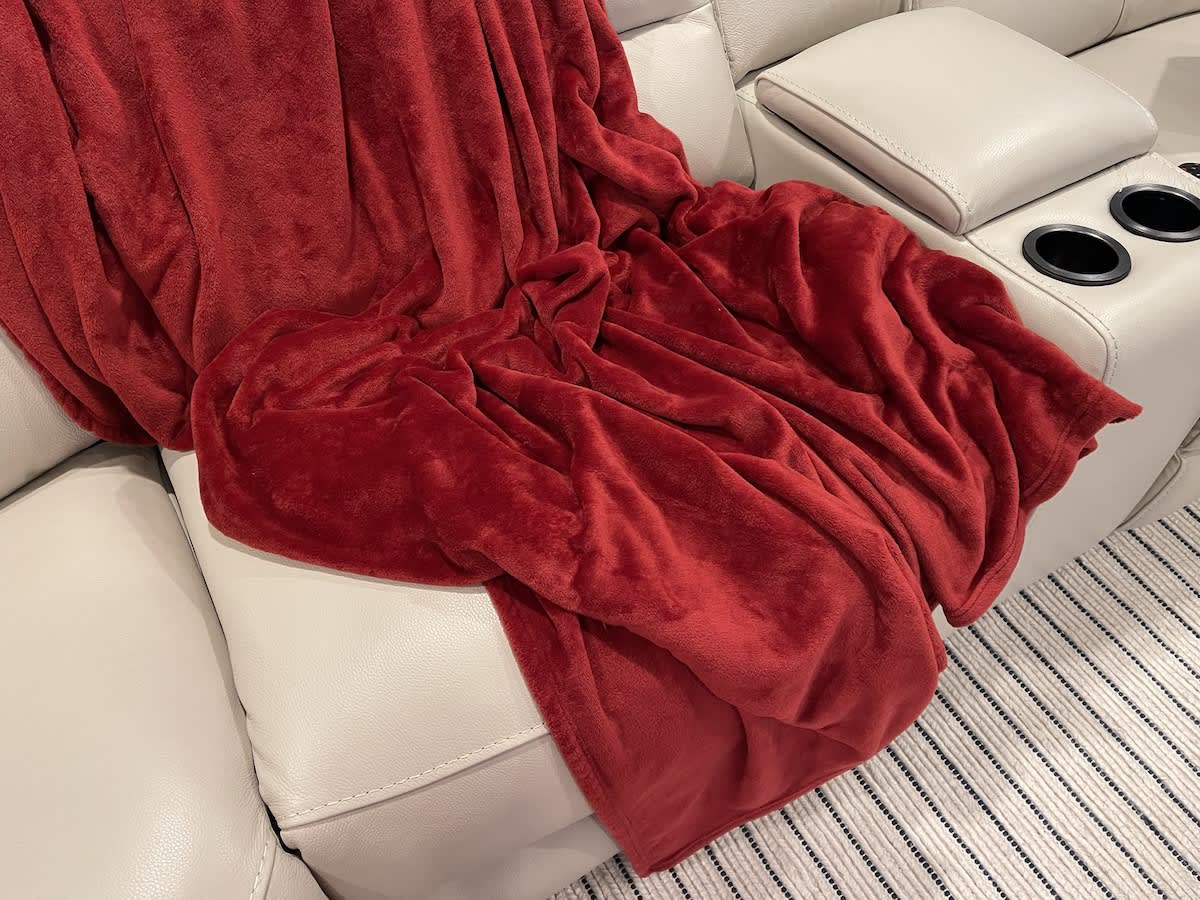

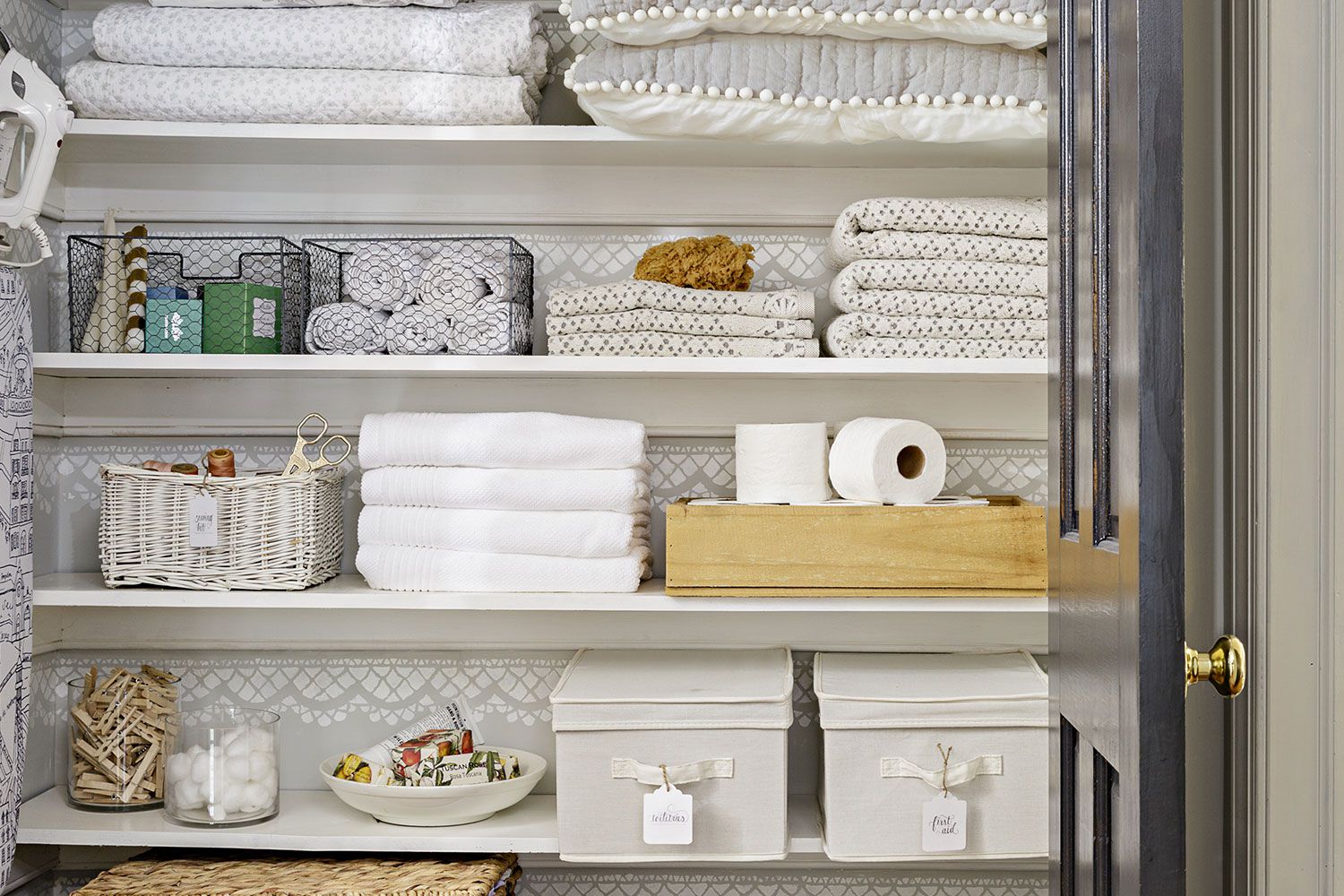
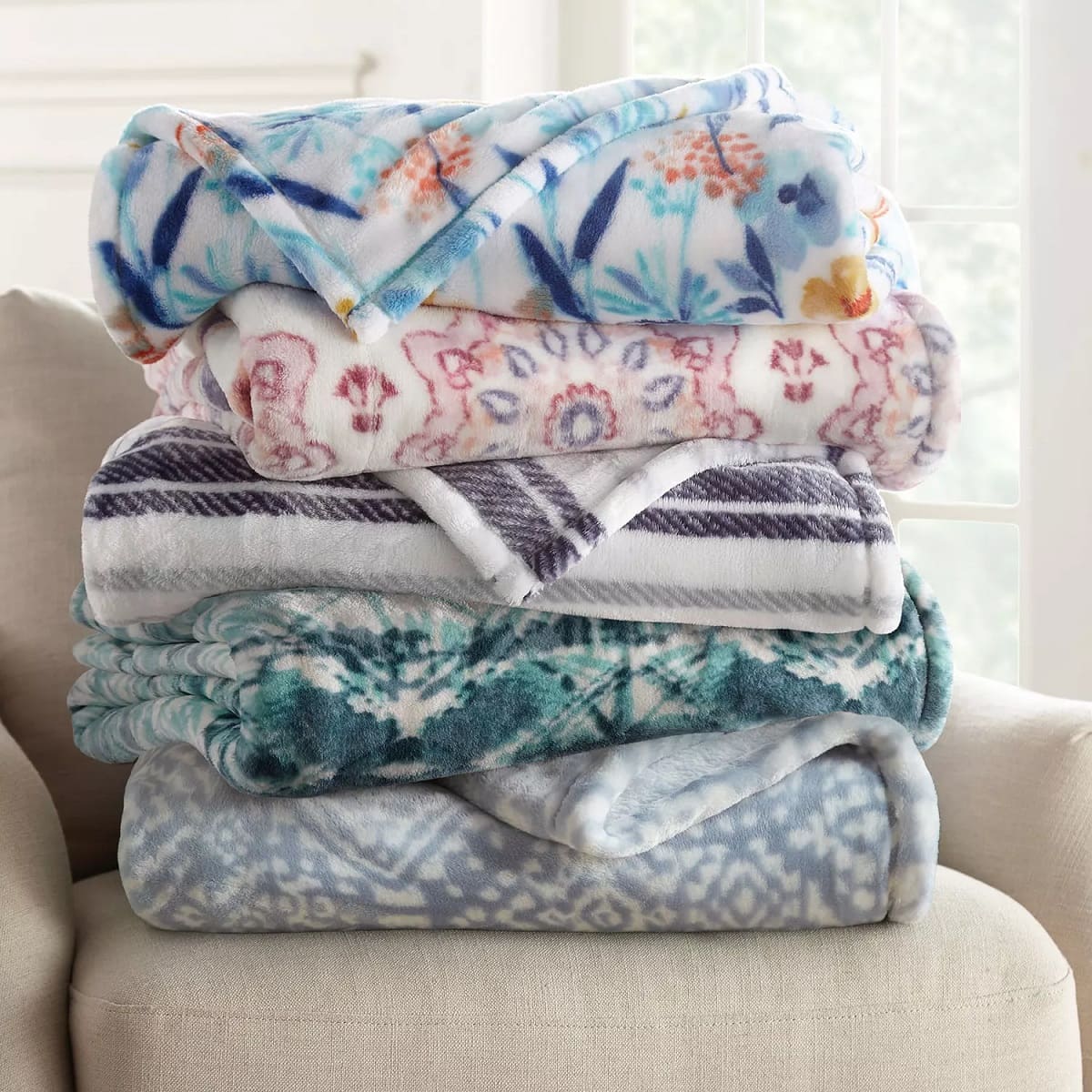
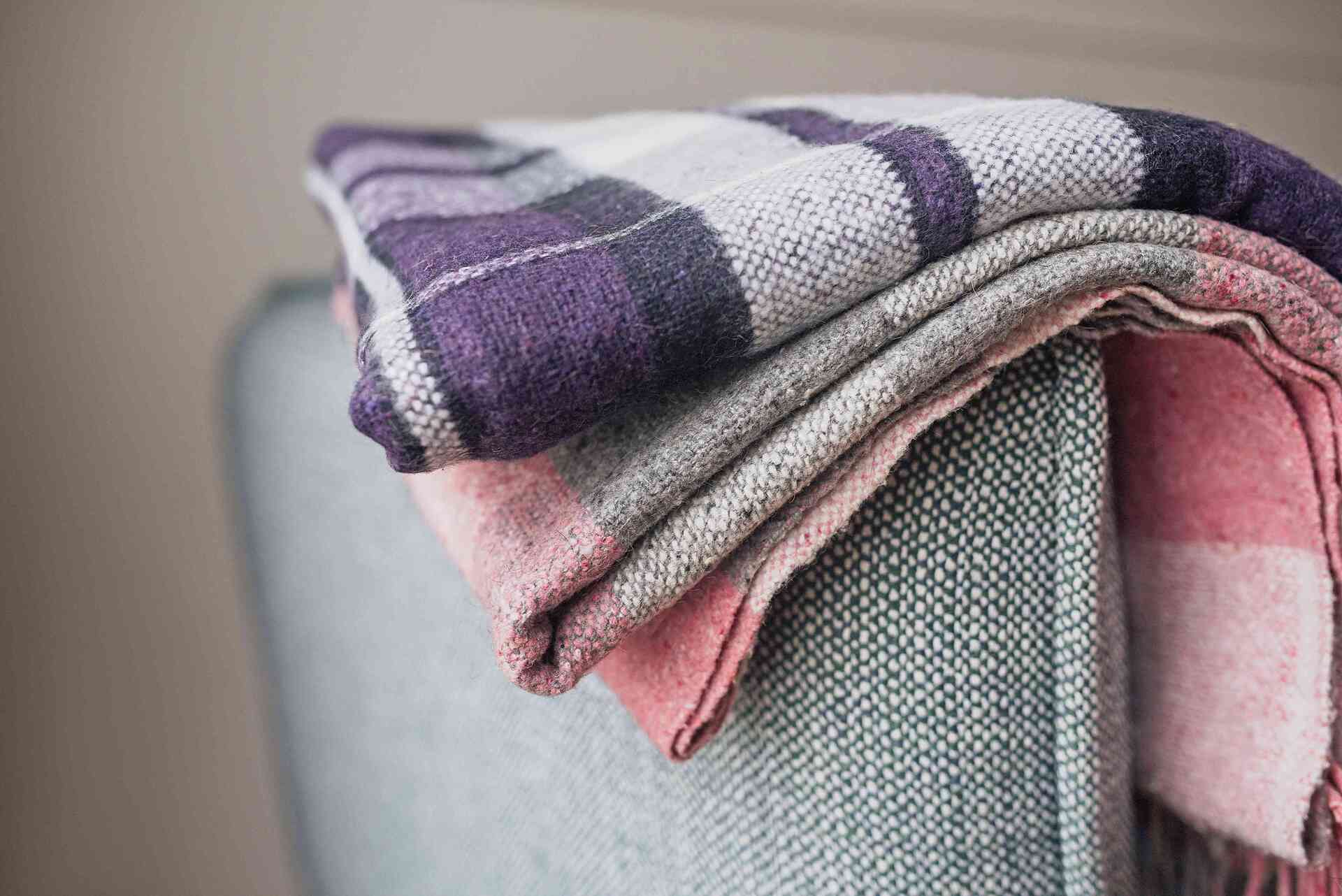

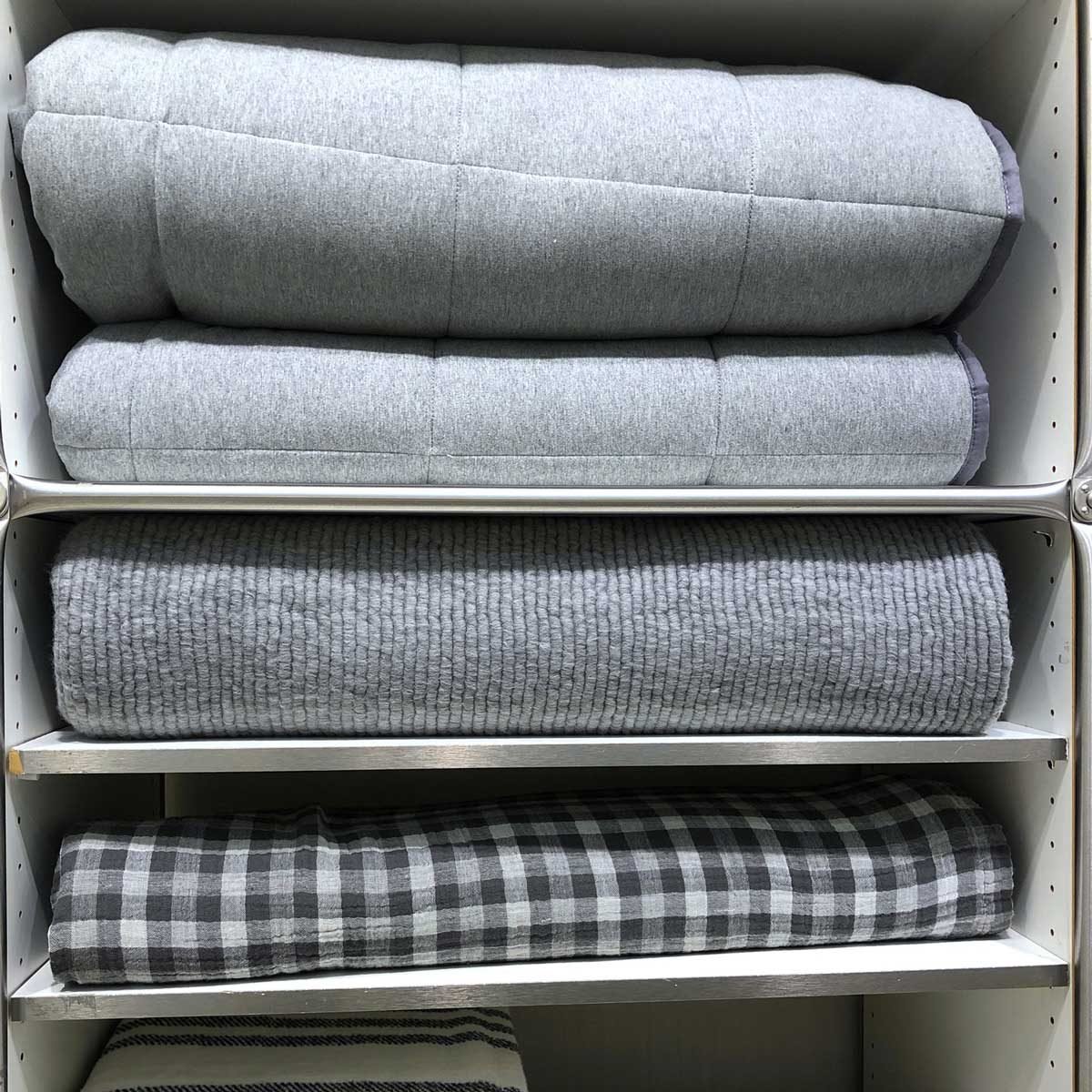
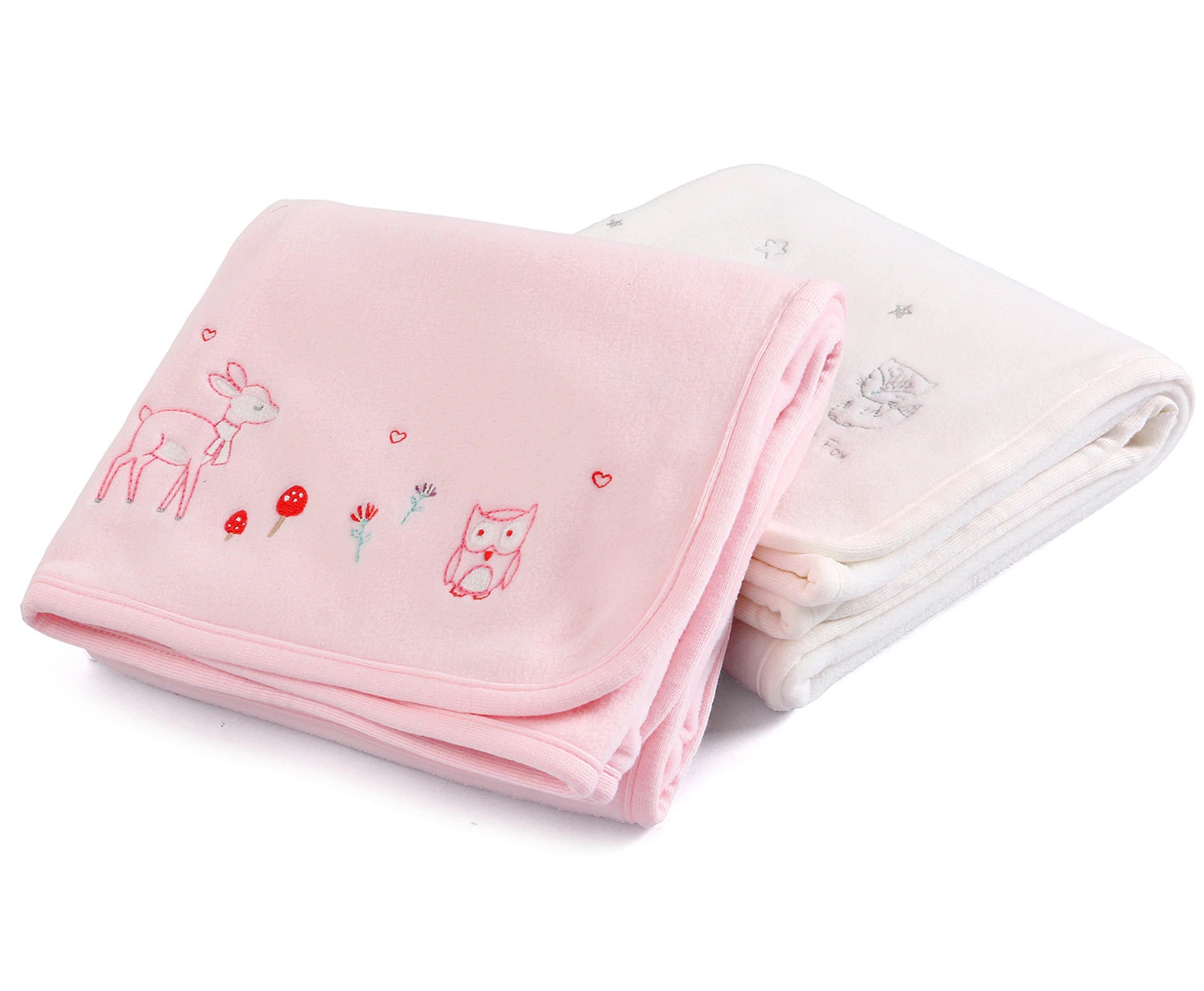

0 thoughts on “How To Store Throw Blankets”